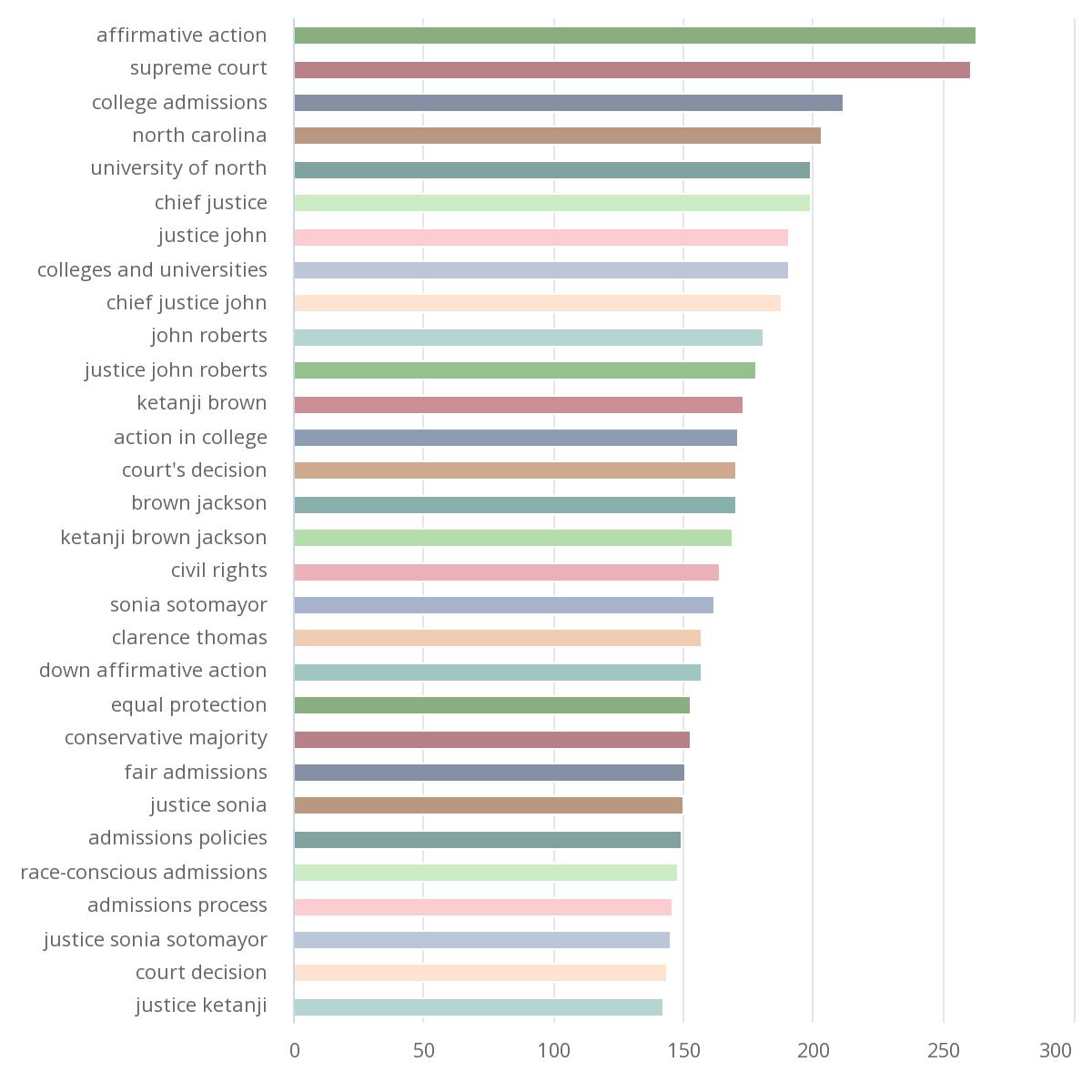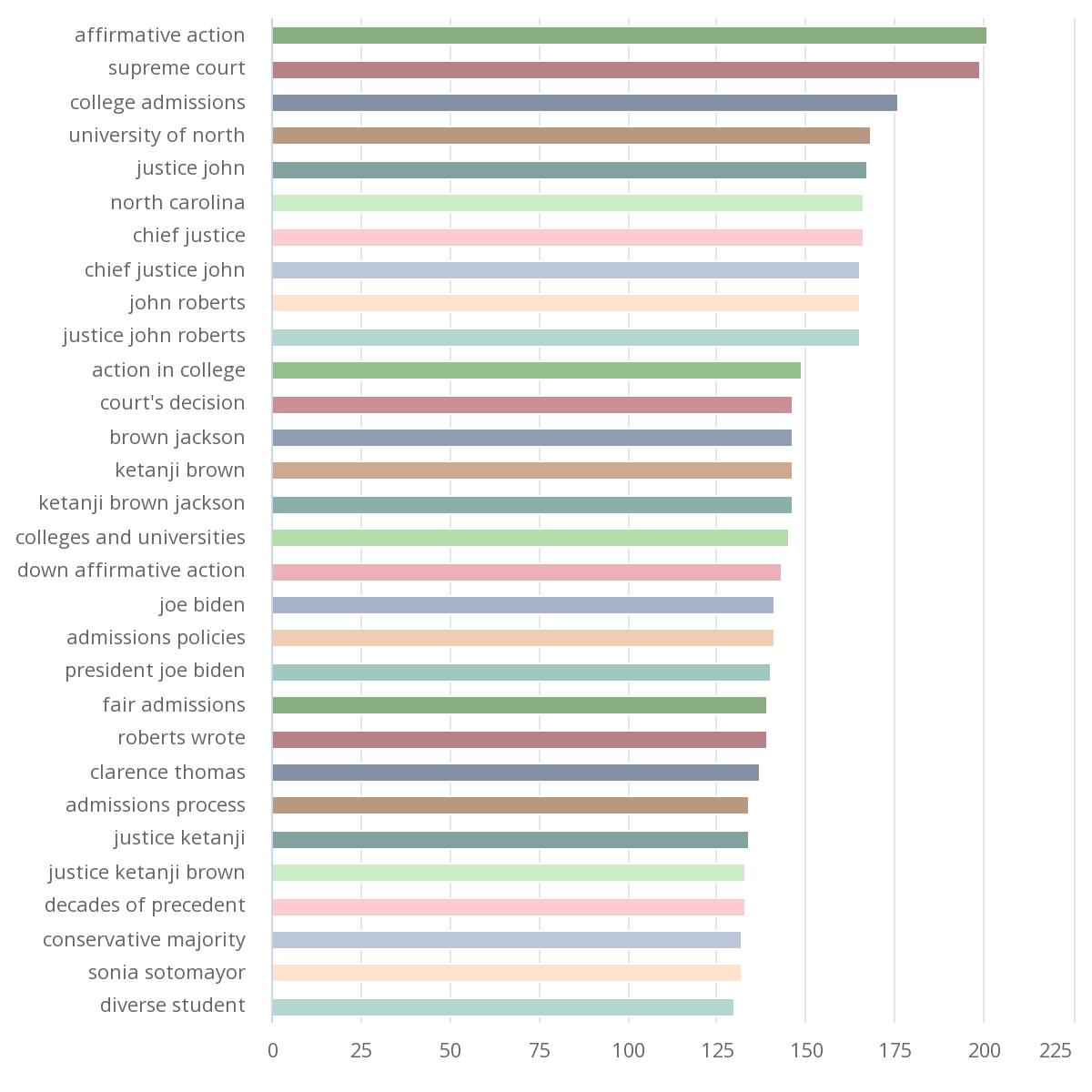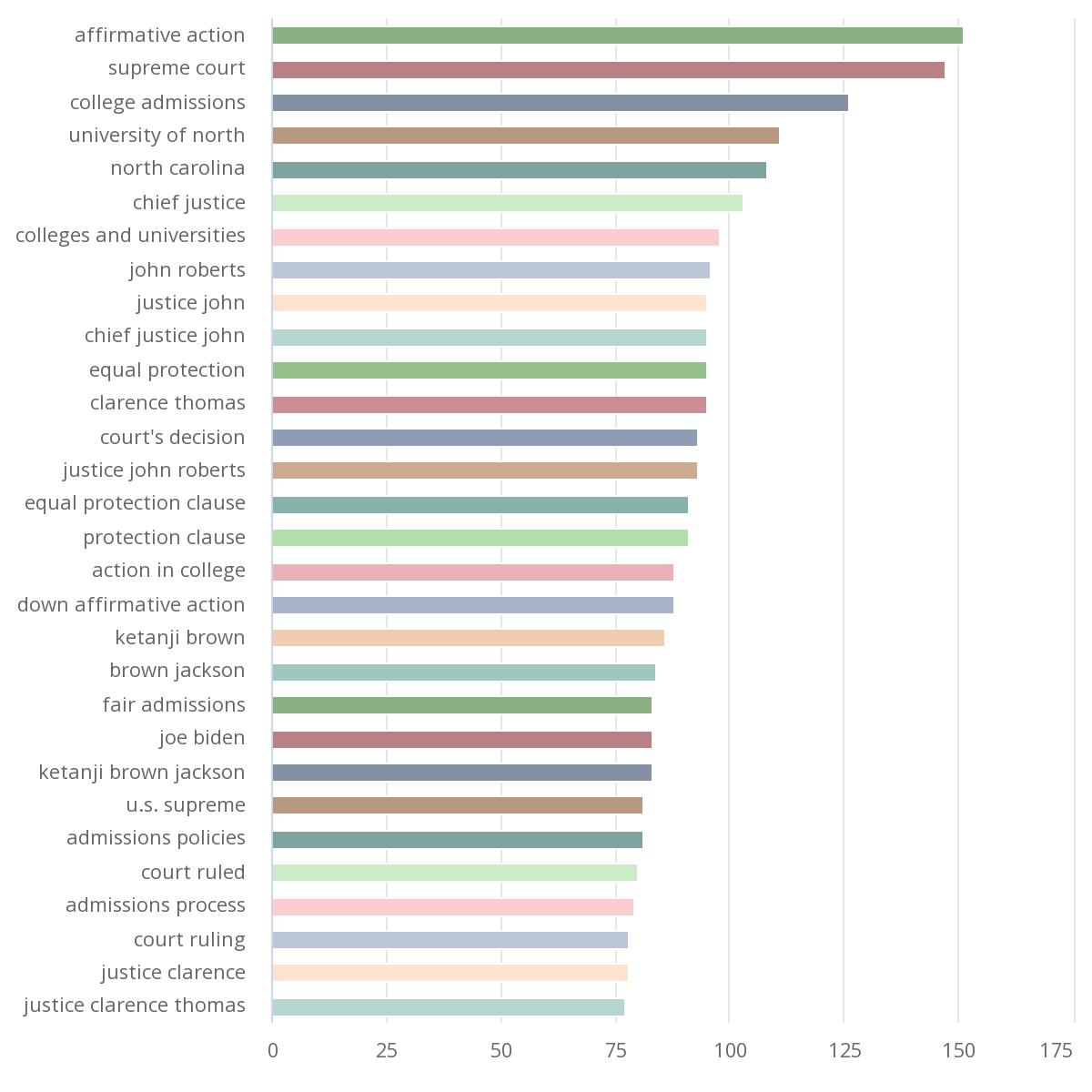
Over the last 7 days, our Narrative Intelligence has identified 984 stories amplified by 201 Least Bias sources in U.S. Media regarding the U.S. Supreme Court's Affirmative Action ruling. Among these sources, The Hill has emerged as the leading amplifier. This brief focuses on media narratives surrounding three key issues related to the Supreme Court's recent decisions. These issues include the blocking of affirmative action in college admissions, the invalidation of race-conscious admissions policies, and the backing of a Christian worker who wanted Sundays off. These decisions have significant implications for higher education and religious liberty in the American workplace.
Our Kudzu Narrative Intelligence briefs auto-update every few hours with fresh analysis:
The Supreme Court has made a significant ruling regarding affirmative action in college admissions. Key insights include:
Key Takeaways:
The Supreme Court's affirmative action ruling has also invalidated race-conscious admissions policies. Key insights include:
Key Takeaways:
The Supreme Court has backed a Christian worker who requested Sundays off. Key insights include:
Key Takeaways:
In this Kudzu Narrative Intelligence Brief on the affirmative action ruling, a comparative analysis of the top surfaced keywords reveals interesting insights. The keywords that appear most frequently in the "Least Bias in U.S. Media" category include "affirmative action," "supreme court," and "college admissions." These keywords are significant in shaping the narrative around fairness and justice in educational institutions.
Comparatively, the keywords found exclusively in the "Least Bias in U.S. Media" category, such as "president Joe Biden," "Roberts wrote," and "justice Ketanji Brown," highlight the involvement of key individuals in the discourse surrounding affirmative action and college admissions. These keywords provide a more specific lens through which to understand the competing narratives.
The presence of keywords like "decades of precedent" and "diverse student" further emphasizes the importance of historical context and diversity in the ongoing discussions. These keywords indicate a focus on the long-standing legal and social implications of affirmative action policies.
In contrast, the "Left-Leaning Bias in U.S. Media" category prominently features keywords like "civil rights," "justice Sonia," and "race-conscious admissions." These keywords suggest a narrative that highlights the importance of equal opportunities, diversity, and inclusivity in college admissions. The presence of "court decision" and "justice Sonia Sotomayor" indicates a focus on legal perspectives and the role of specific justices in shaping the narrative.
On the other hand, the "Right-Leaning Bias in U.S. Media" category showcases keywords such as "equal protection clause," "protection clause," and "U.S. Supreme Court." These keywords suggest a narrative that emphasizes constitutional principles and the interpretation of the law. The presence of "court ruled" and "court ruling" indicates a focus on legal decisions and their implications.
Additionally, the keywords "justice Clarence Thomas" highlight the role of specific justices in shaping the narrative from a right-leaning perspective.
Overall, the comparative analysis of the top surfaced keywords provides insights into the different narratives surrounding affirmative action and college admissions. The keywords highlight the involvement of key individuals, the importance of historical context, and the emphasis on legal perspectives from various biases. Understanding these keywords and their relationship to competing narratives is crucial in comprehending the multifaceted discourse surrounding this topic.

Left-Leaning Bias in U.S. Media

Least Bias in U.S. Media

Right-Leaning Bias in U.S. Media
Note: Kudzu Narrative Intelligence briefs update every few hours. Very likely, the Narrative Analysis data visualization depicted in the graphic above will have changed as well.
Image Credit for Article Header: Photo by Adam Michael Szuscik on Unsplash